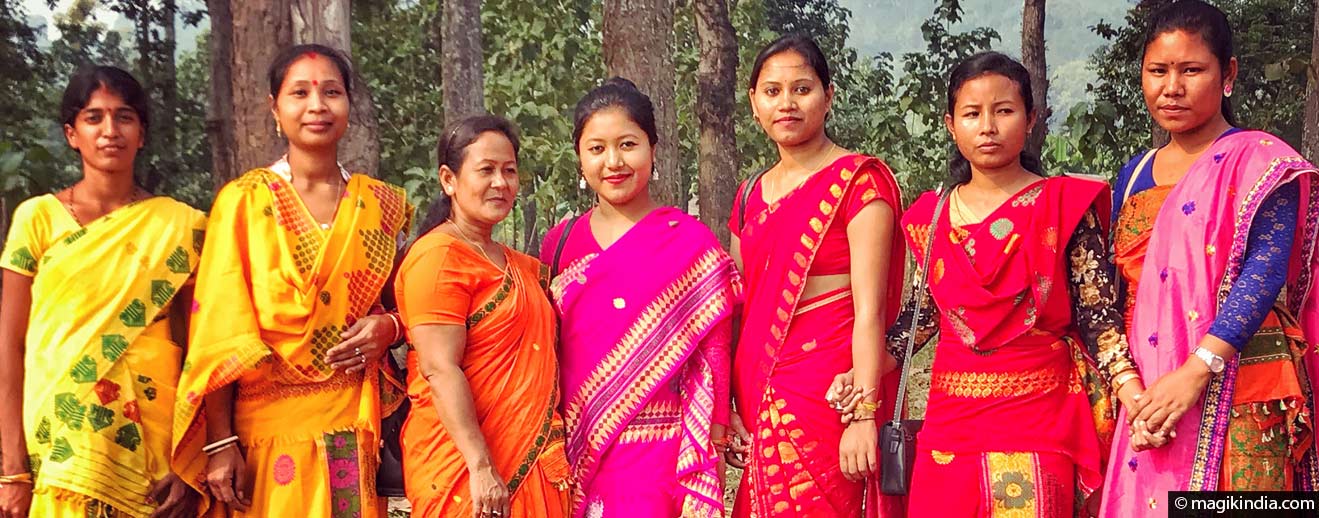
Assam, the seventh sister of Northeast India
Assam state is one of the ‘seven sisters’ of Northeast India, located along the Brahmaputra valley. If its capital offers few attractions, the surroundings in contrast, with its tropical forests – the last habitat of the one horned rhinoceros – its tea plantations and Majuli island with its dancing monks, will seduce the traveler seeking for both culture and wild landscapes.
Guwahati, first approach to Assam
The city of Guwahati is located on the banks of the Brahmaputra River. It has an international airport that makes it easy to reach the neighbour state of Meghalaya. The city itself has no charm but the very revered temple of Kamakhya is worth the detour.
Kamakhya temple
Located on the Nilachal Hill in the western part of the city, the Kamakhya Temple is dedicated to the Mother Goddess Kamakhya. It is one of the four most important Shakti Peeth and therefore one of the highest pilgrimage sites in India. This is the place where, according to the sacred texts of Kalika Purana, the yoni or vagina of Sati fell. => Read the full story of the Shakti Peeth

The temple was built and renovated several times from the 8th century till now, which gave birth to a hybrid style of architecture that is sometimes called ‘Nilachal type’: the temple is built on a cruciform base capped with a hemispherical dome.
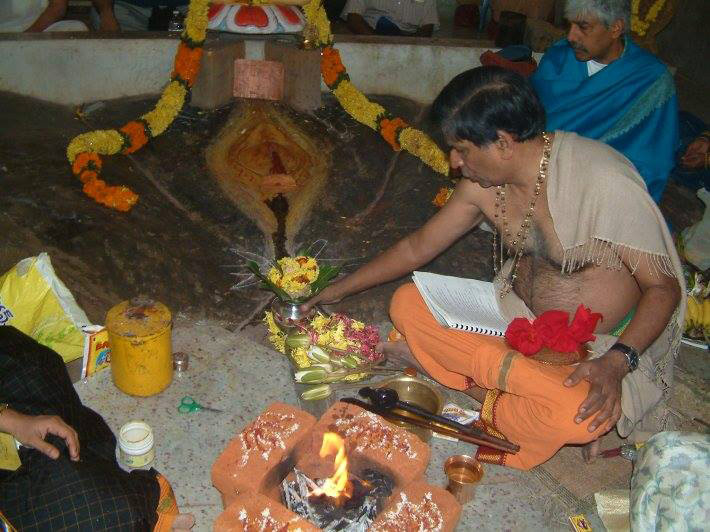
The main sanctuary, the garbhagriha, is below ground level and contains no idols but a fissure in a rock in the shape of a yoni (vagina) that is venerated as the goddess Kamakhya herself. This fissure is constantly filled with water from a perennial underground source.
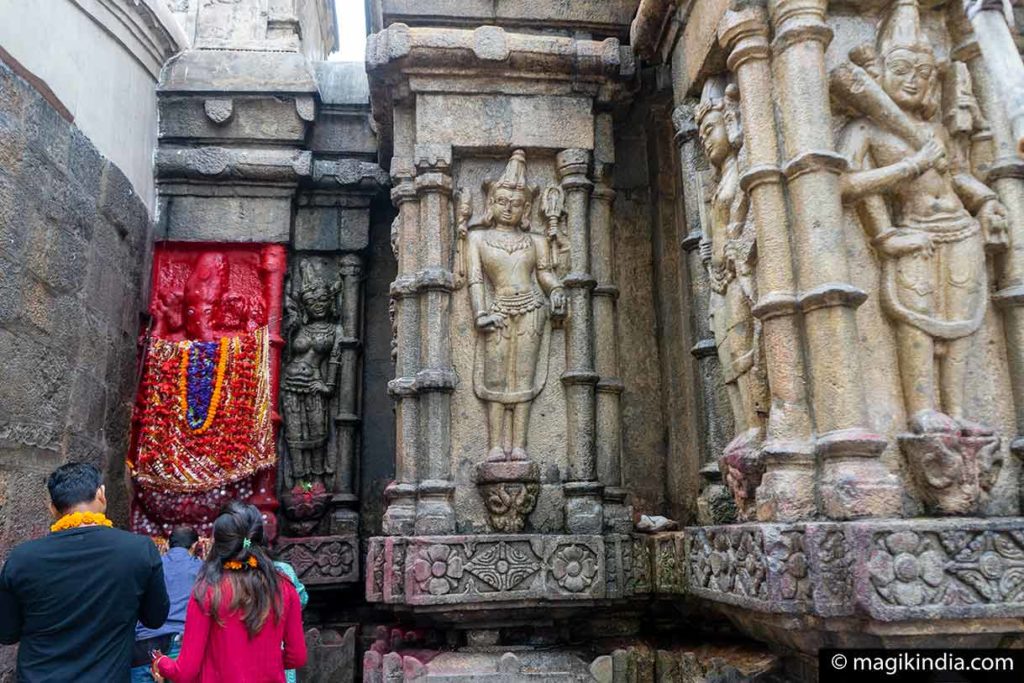
The worship of the goddess always includes sacrifices from which sensitive souls should abstain. Devotees buy goats or pigeons in the temple that will be offered to the goddess. Sacrifices in shrines dedicated to Durga or Kali are common in India, this cult is very old and is part of tantric practices.

What is tantra ?
Tantra should not be confused with the term ‘Tantrism’, which is a 19th century European invention that is not present in any ancient text of India. Thus, tantra has been associated frequently but incorrectly with sex, labeled as the ‘yoga of ecstasy’. This is far from the diverse and complex understanding of what tantra means to Buddhists and Hindus who practice it.
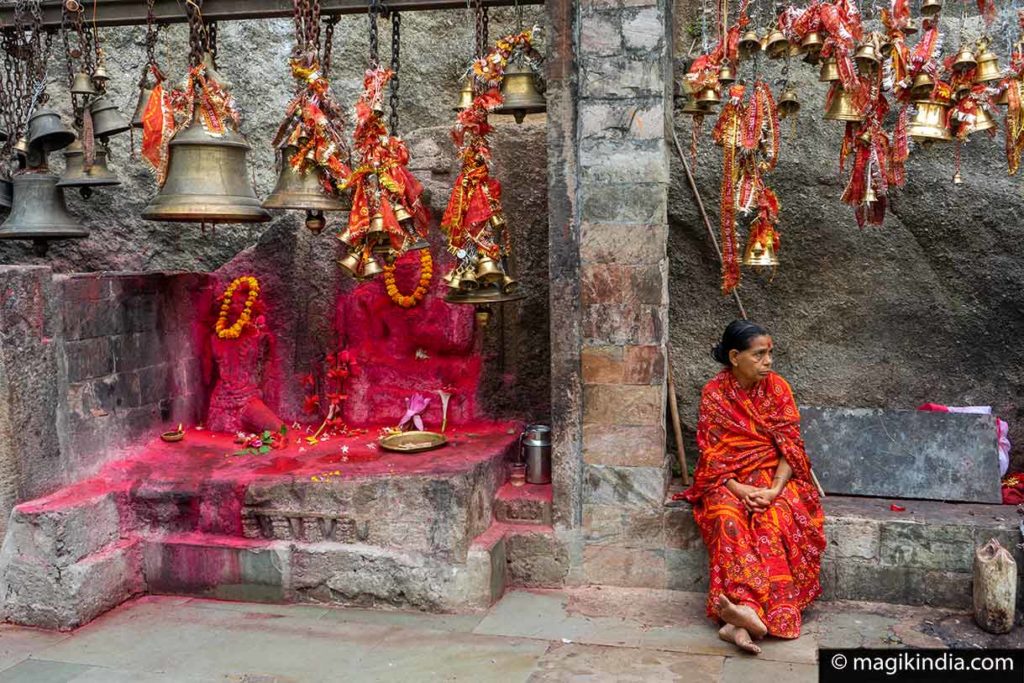
Tantra is a set of codified esoteric rituals and methods found in Hinduism and Buddhism that developed in the middle of the 1st millennium BC. Due to the wide range of communities practicing the tantra, it is impossible to exhaustively describe tantric practices, but several features are found in this method, such as worship centered on divinities, the chanting of mantras, the secret initiation given by a master, the sacrifices of animals and an important role given to women.
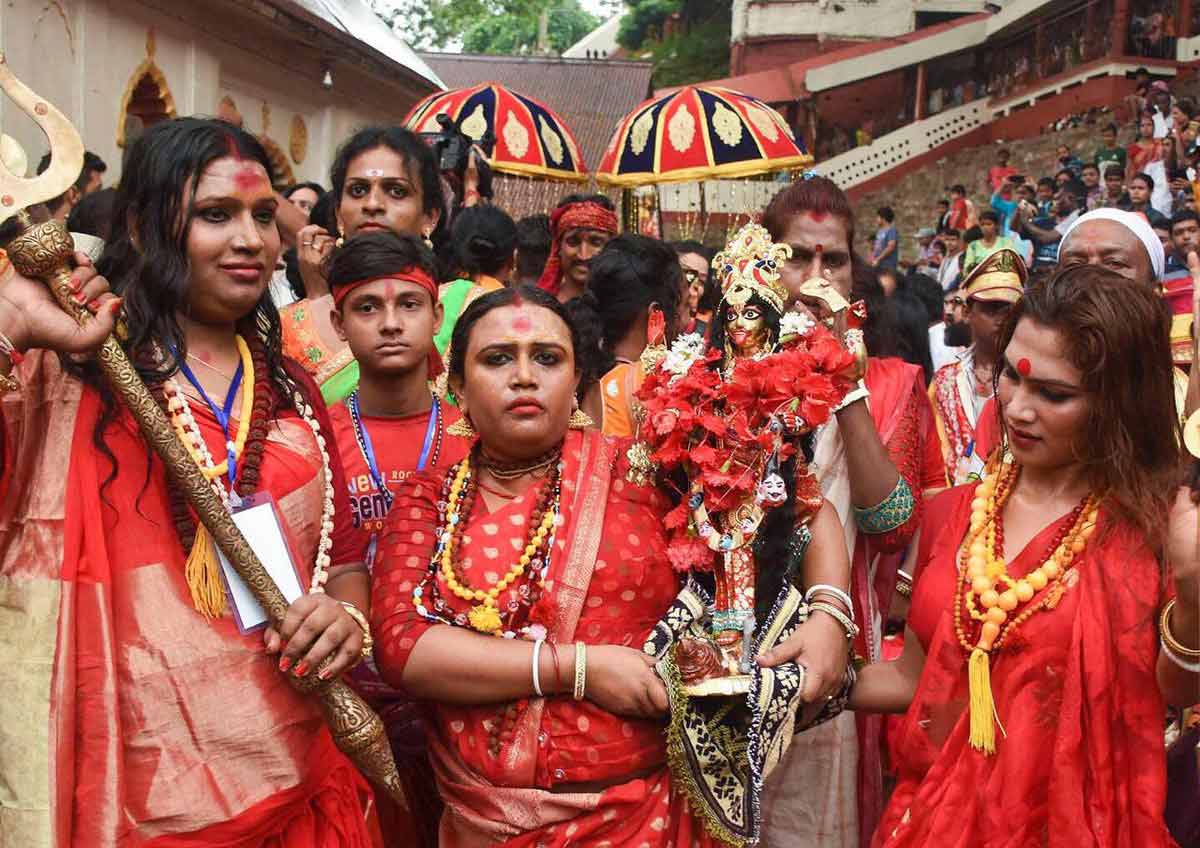
The biggest festival of Kamakhya Temple is ‘Ambubachi Mela’ held during the monsoon season (around mid-June). It is the celebration of the annual menstruation of the goddess Kamakhya. Hindu believe that during the monsoon rains, the creative and nurturing power of menstruation of Mother Earth becomes accessible to the faithful and brings abundance and happiness.
The other big festival is Durga Puja, the 10 days dedicated to Shakti or Universal Mother.
Assam State Museum
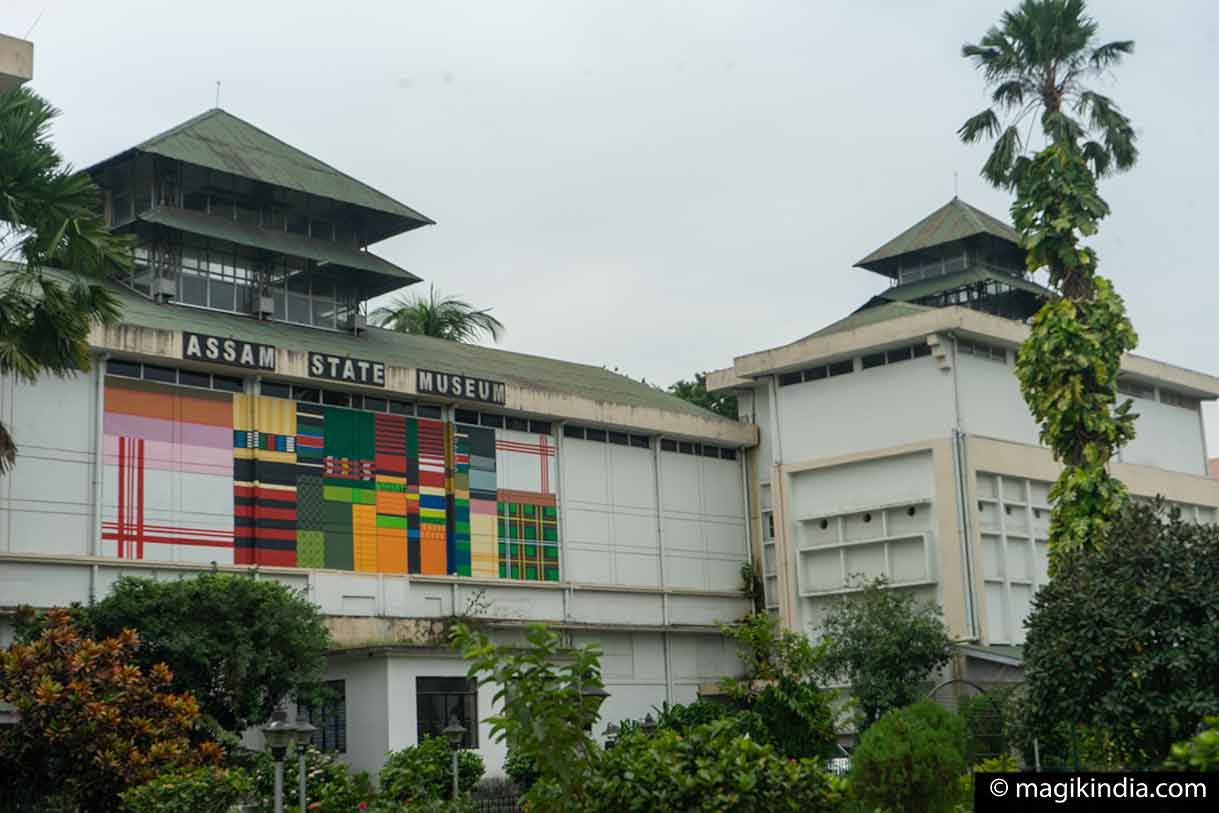
The Assam State Museum is located in the heart of Guwahati. It exhibits, among other things, beautiful stone, wooden, metal and terracotta sculptures and Assamese crafts.
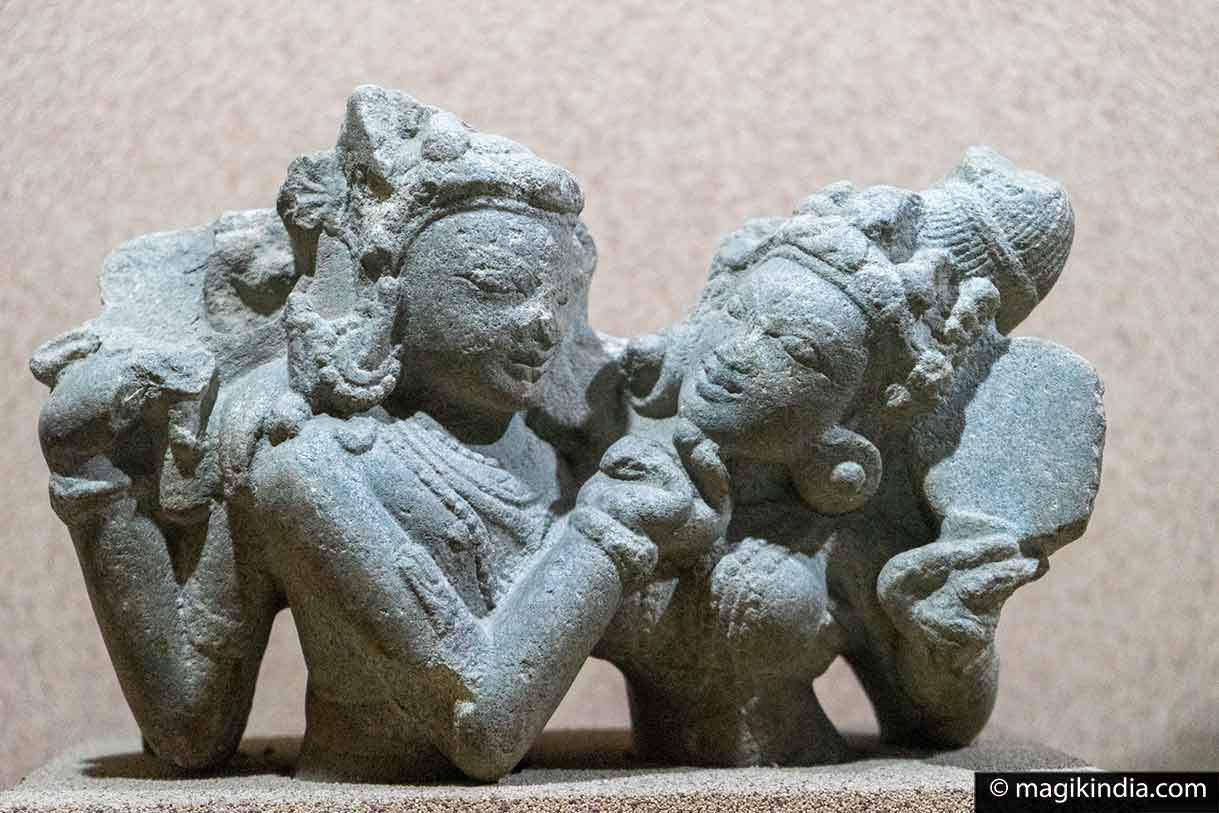
Peacock island & Umananda temple
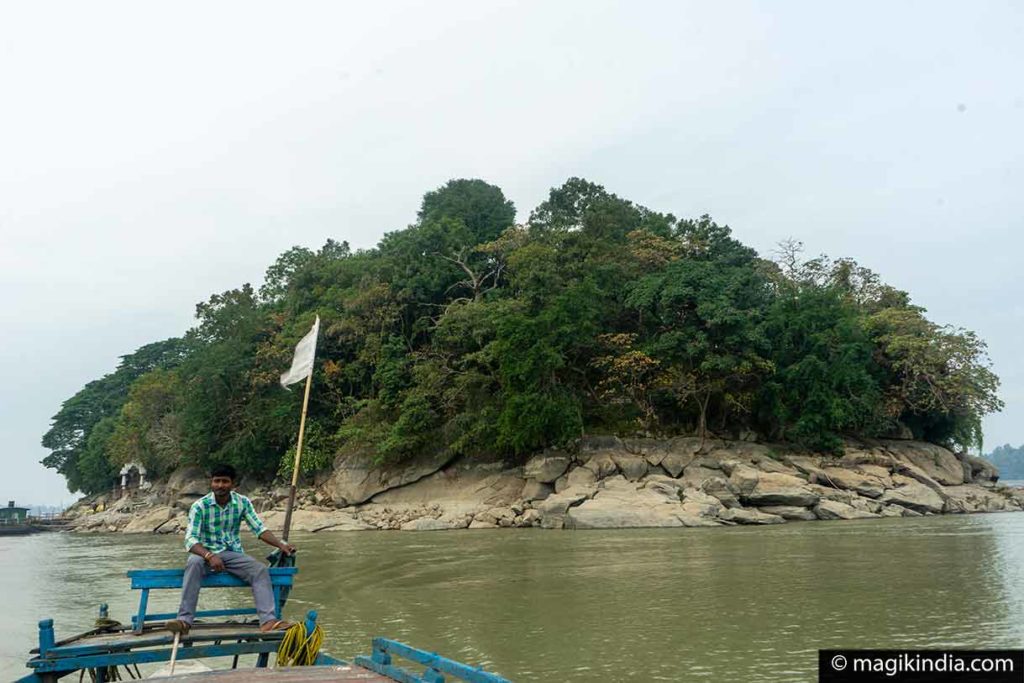
Peacock Island is located north of the city, in the middle of the Bhramaputra River. A ferry takes us there for 30 rupees. On this island stands the temple of Umananda, which according to Hindu mythology, was created by Lord Shiva for his wife Parvati. Umananda is also called ‘Bhasmachal’ in Assamese, which literally means ‘ash hill’: According to a myth, on this island, Shiva reduced to ashes the God Kama with his third eye when Kama interrupted his deep meditation .
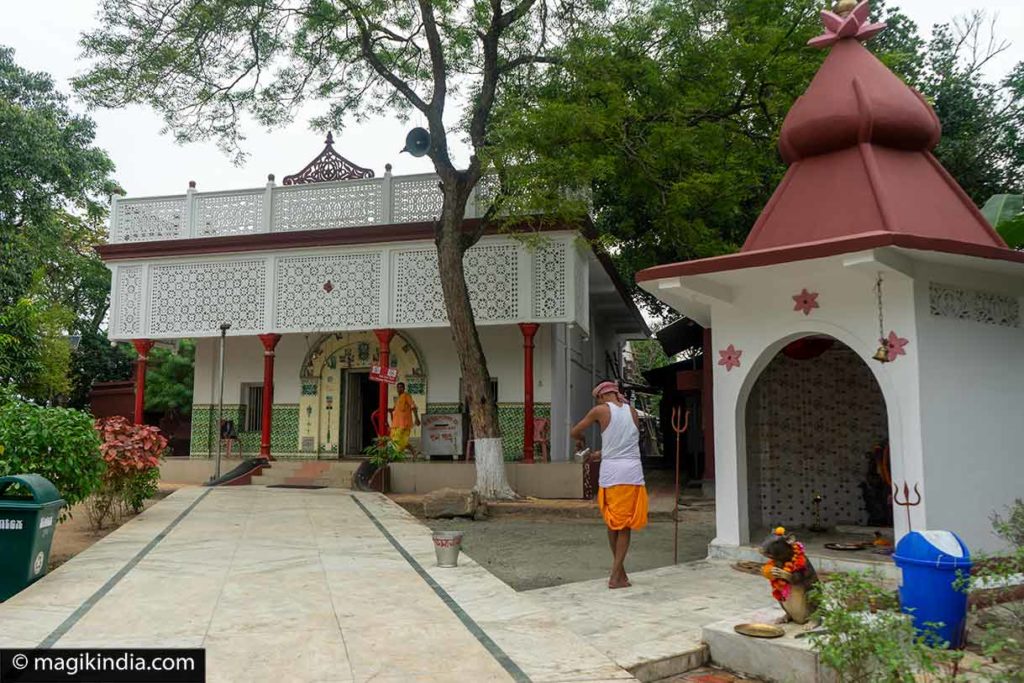
When you return from the island of Peacock, continue your walk along the Brahmaputra River banks, you may see the fish auction early morning that is really worth a look.
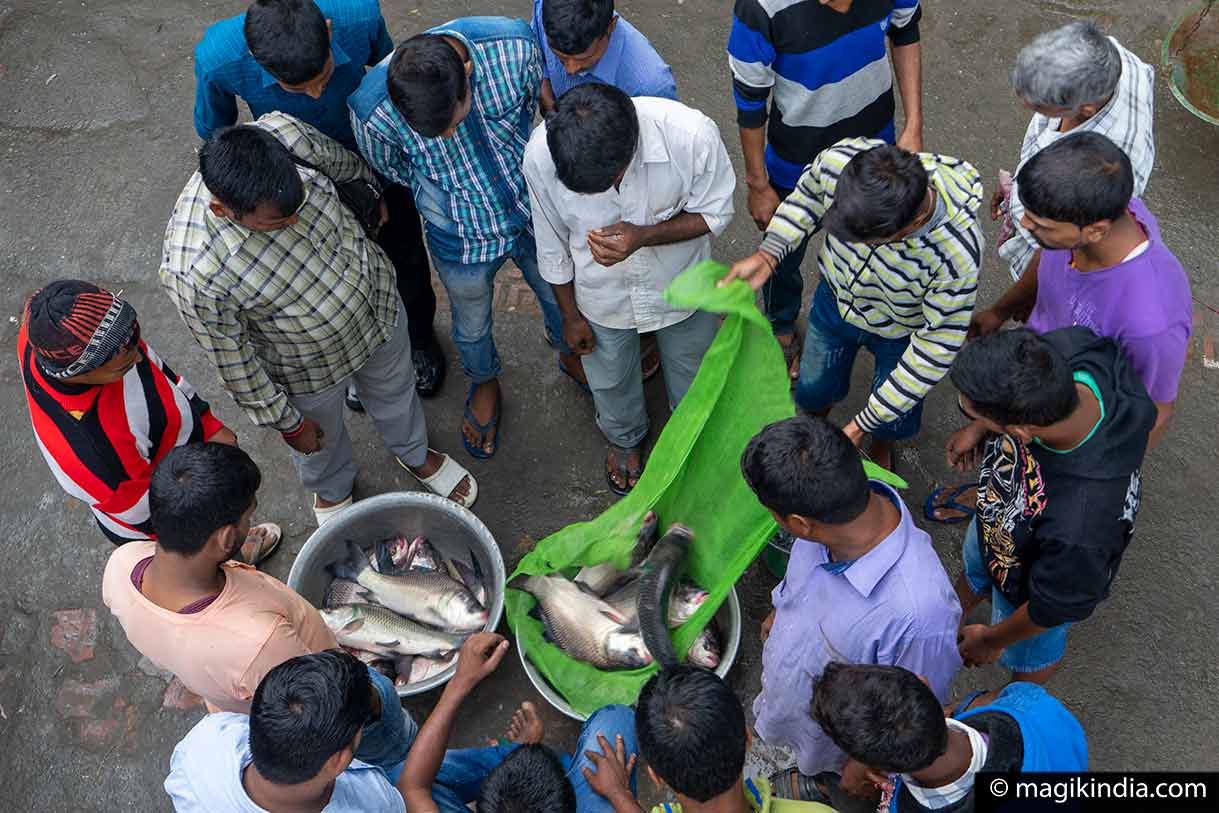
Navagraha Temple
The Navagraha Temple built by King Ahom Rajeswar Singha at the end of the 18th century stands at the top of Chitrasal Hill (or Navagraha Hill).
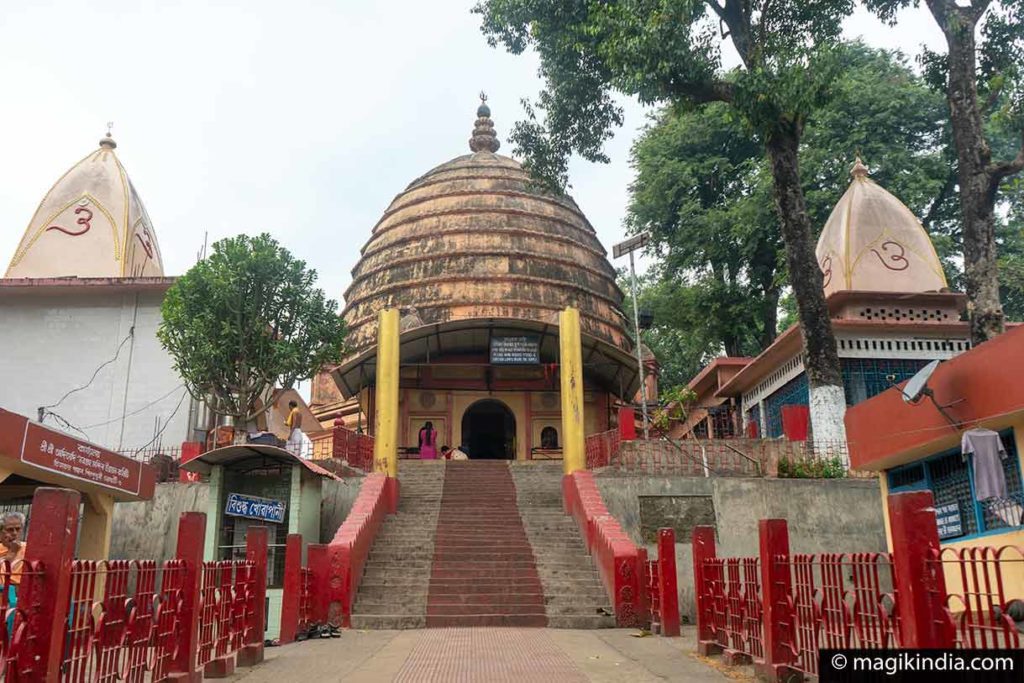
The Navagraha temples in India are dedicated to the nine great celestial bodies of Hindu astronomy: Surya (sun), Chandra (moon), Mangala (March), Buddha (Mercury), Brihaspati (Jupiter), Shukra (Venus), Shani (Saturn) , Rahu (lunar north) and Ketu (south lunar node).
The Navagraha temple of Guhawati is very special: instead of stones representing the planets, there, nine Shivalingams each covered with a different colored fabric for each planet are enshrined in the main sanctuary. The atmosphere is mysterious and serene. A must-see!
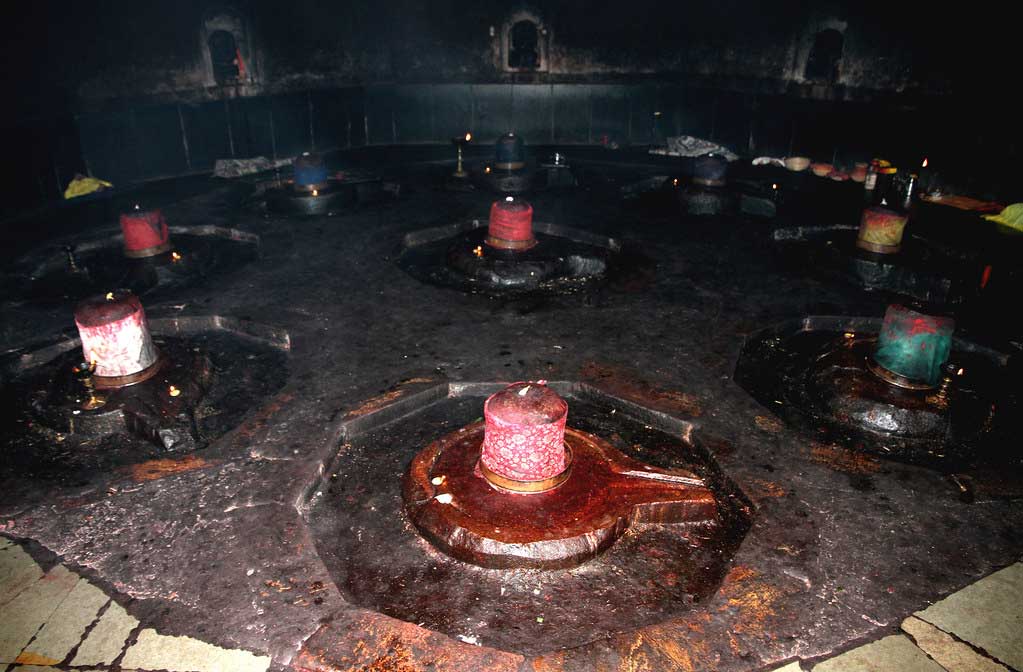
 Chanbudi lake
Chanbudi lake
Lake Chanbudi is no doubts one of my favorite place in Assam.
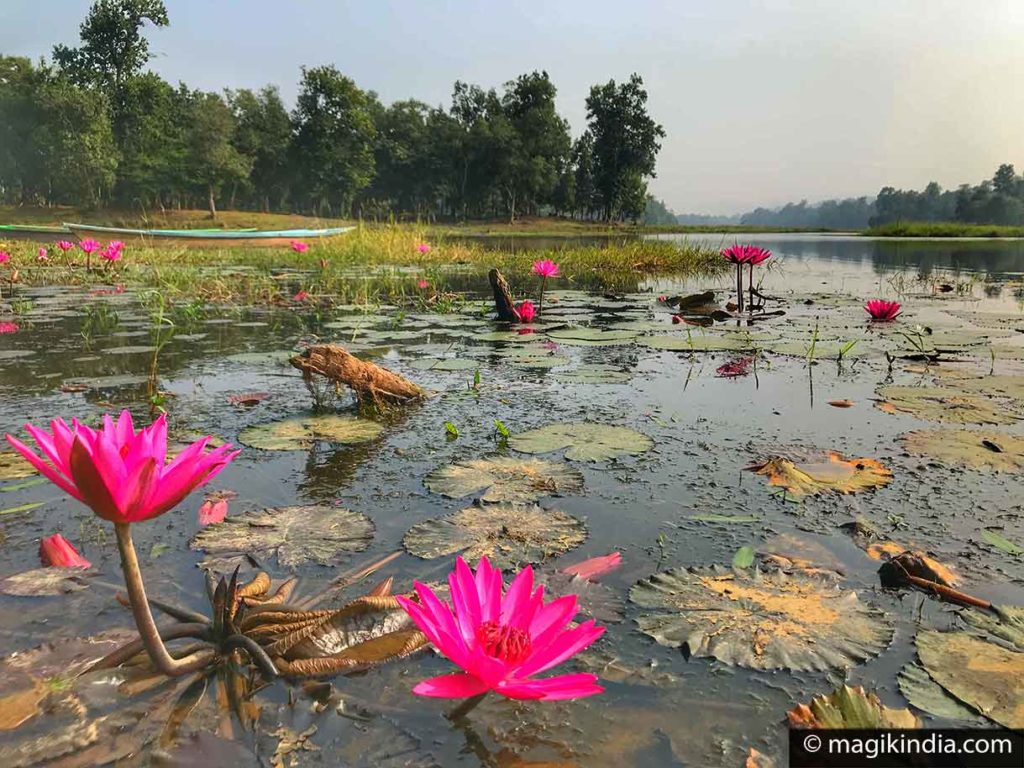
Chanbudi is a natural lake located in the district of Kamrup, at a distance of 60 kilometers from the city of Guwahati. It stands at the foot of the Garo hills, covered with deep forests, and was formed in the aftermath of the 1897 earthquake in Assam.
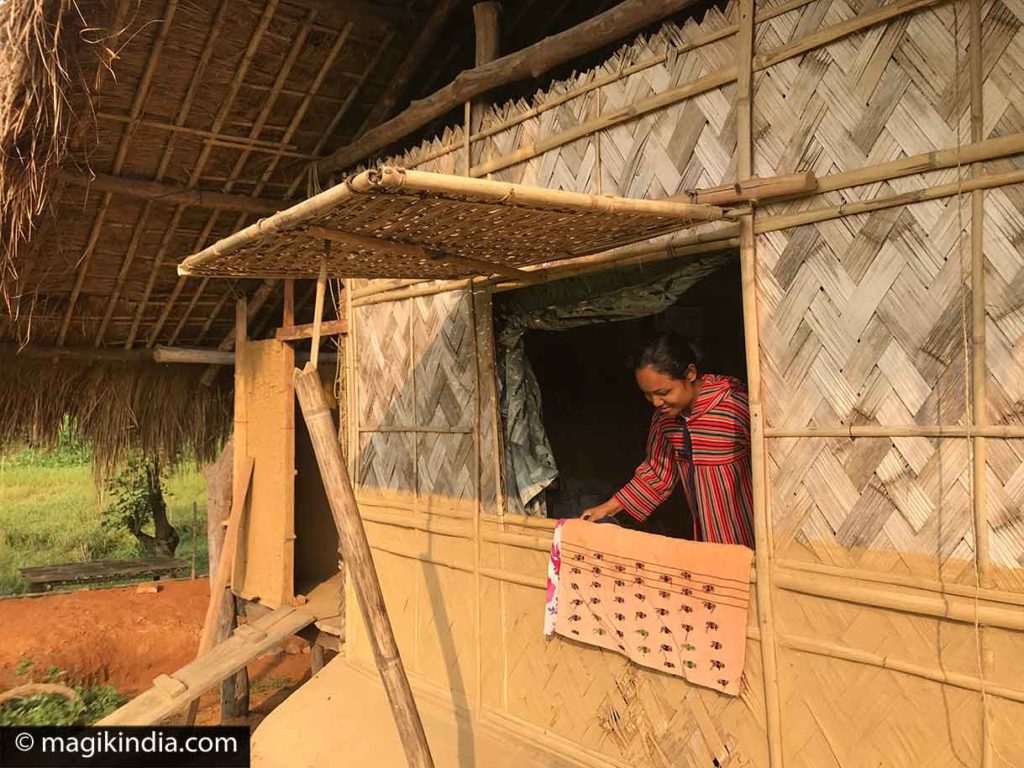
The lake is a well known place for family picnics and school outings. But, fortunately, it offers much more than that: all around the lake there are small villages of a few hundred souls inhabited by tribal communities (Rabha, Garo, Bodo, Tiwa ..). A homestay in traditional wooden houses is a must.
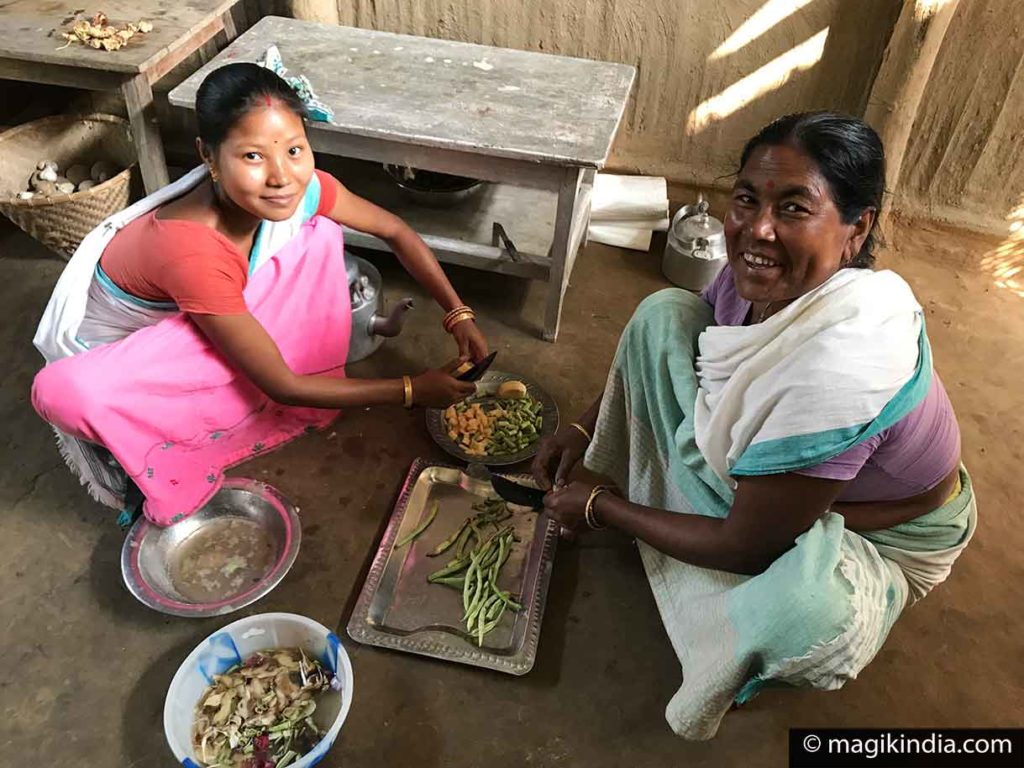
Tribal natural cuisine is a pure delight, and hiking in the hills with the help of a machete is a complete change of scenery, and you may see wild elephants. Boating on the lake is just as pleasant.
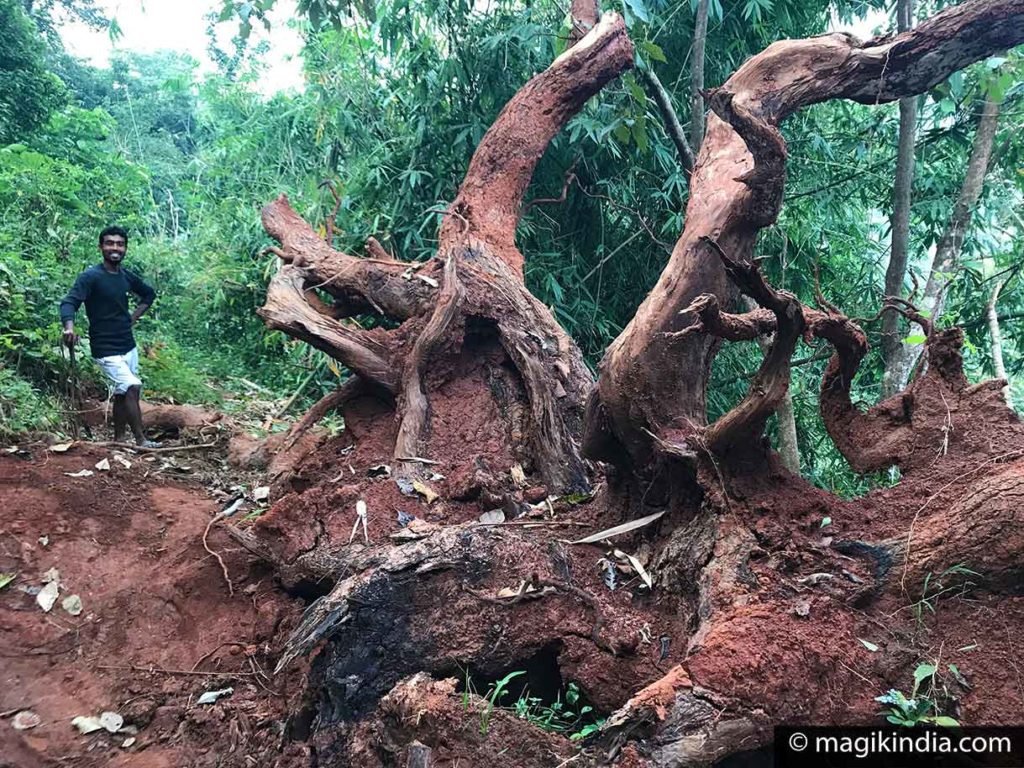
Meeting tribal people living around the lake is also a very enriching experience and allows you to discover their ancestral traditions. There, the main specialty is sericulture, that is to say the breeding of silkworms. Breeders collect worms on long bamboo rakes and move them from tree to tree so that they can feed them from fresh new leaves.
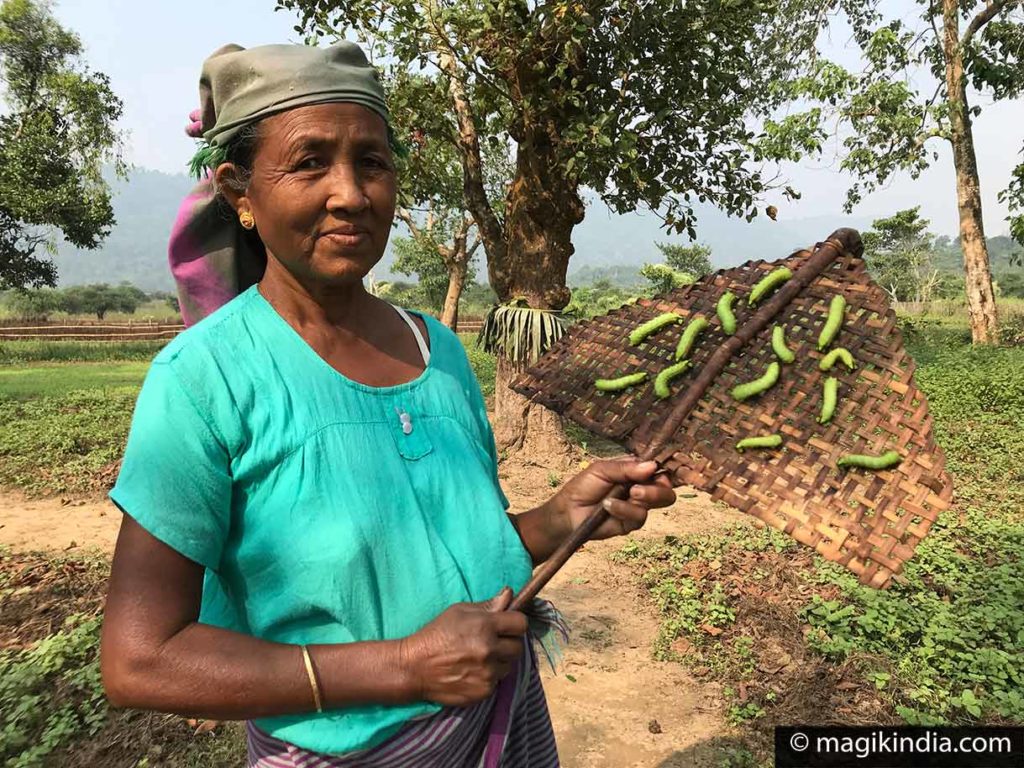
Unlike Western countries where the silkworm feeds only on mulberry leaves, in Assam silk is produced from different species of trees and plants: the mulberry gives the ‘white pad’ silk, the leaves of castles gives ‘Eri’ silk and som leaves, a variety of laurel, givesthe ‘golden silk’.
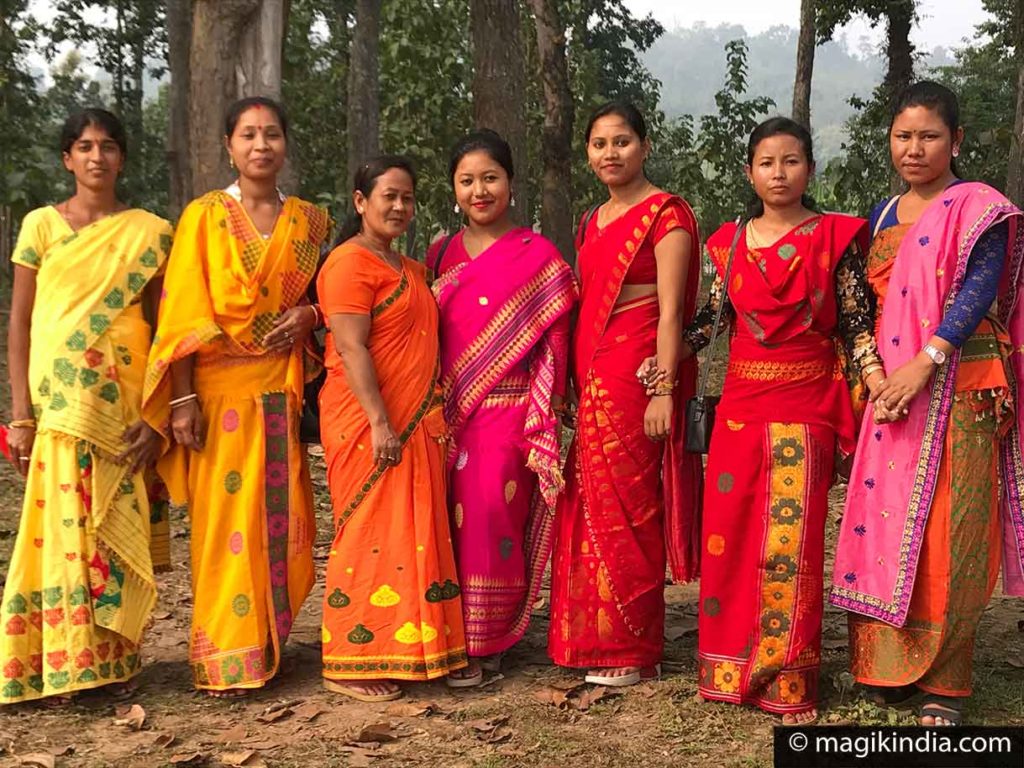
Kaziranga National Park
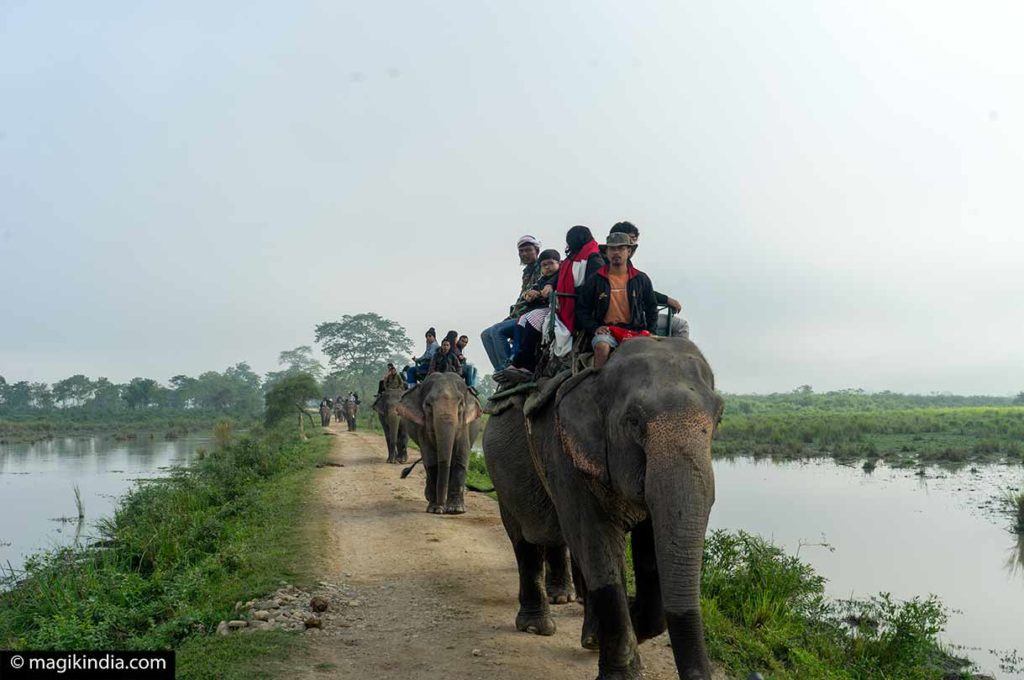
Kaziranga is a national park located in the areas of Golaghat and Nagaon, 200 km from Guwahati. The sanctuary, home to the two-thirds of the world’s one horned rhinos, is a UNESCO World Heritage Site. There are about 1600 adult rhinos and many other protected species such as tigers and Asian elephants. Of the 35 mammal species in the park, 15 are on the red list of endangered animals.
The visit to the park is either made on the back of an elephant (cheaper) or by Jeep. You can easily see several rhinoceros close enough but do not expect the safari to be like in Afrika … the visit is rather short… To do at least once to admire this beautiful caparisoned animal ..
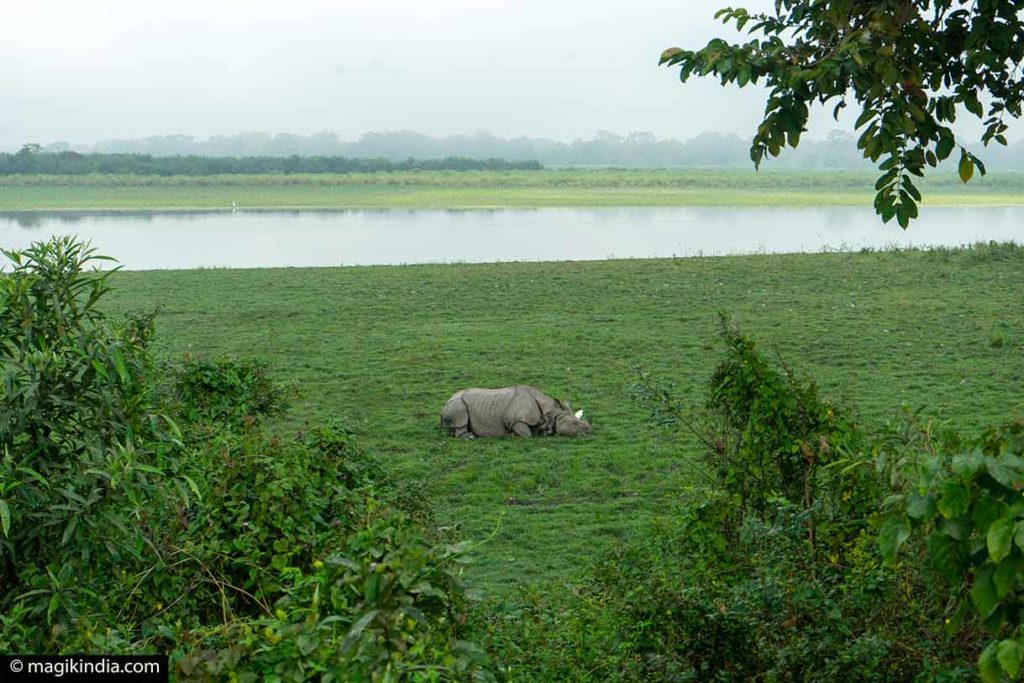
Majuli, the fluvial island of Assam

The road toward Majuli Island is dotted with tea plantations. The state of Assam is the largest tea producing region. It stretches along both banks of the Brahmaputra River and runs alongside Bangladesh and Burma. This part of India enjoys an ideal climate with heavy rainfall and temperatures up to 40 ° C during the day, which contributes to the exceptional taste of Assam tea.

Majuli is a fluvial island (said to be the largest in the world) of about 400 kilometers formed by the river Brahmaputra in the south, Kherkutia Xuti, an anabranche of the Brahmaputra, and joined by the river Subansiri in the north. It is accessible by ferries that operate six times a day from the city of Jorhat.
Majuli is the home of tribal communities: Mising, Deoris and Sonacals Kacharis and host the famous Satra monasteries.,
Satra monasteries
The island has a unique feature in India: monasteries called ‘Satra’ or ‘Ekasarana Dharma’, which practice what is called the ‘neo-vishnouite’ Assamese culture, initiated around the 15th century by Srimanta Sankardeva and his disciple Madhavdeva.

Srimanta Sankardeva was a scholar, poet and socio-religious reformer. He introduced Vishnuism as a social reformer, particularly through the arts. He conceived new artistic forms based on the old ones in the field of music (Borgeet), theater (Bhaona), dance (Sattriya among others), and literary language ( the Brajavali).
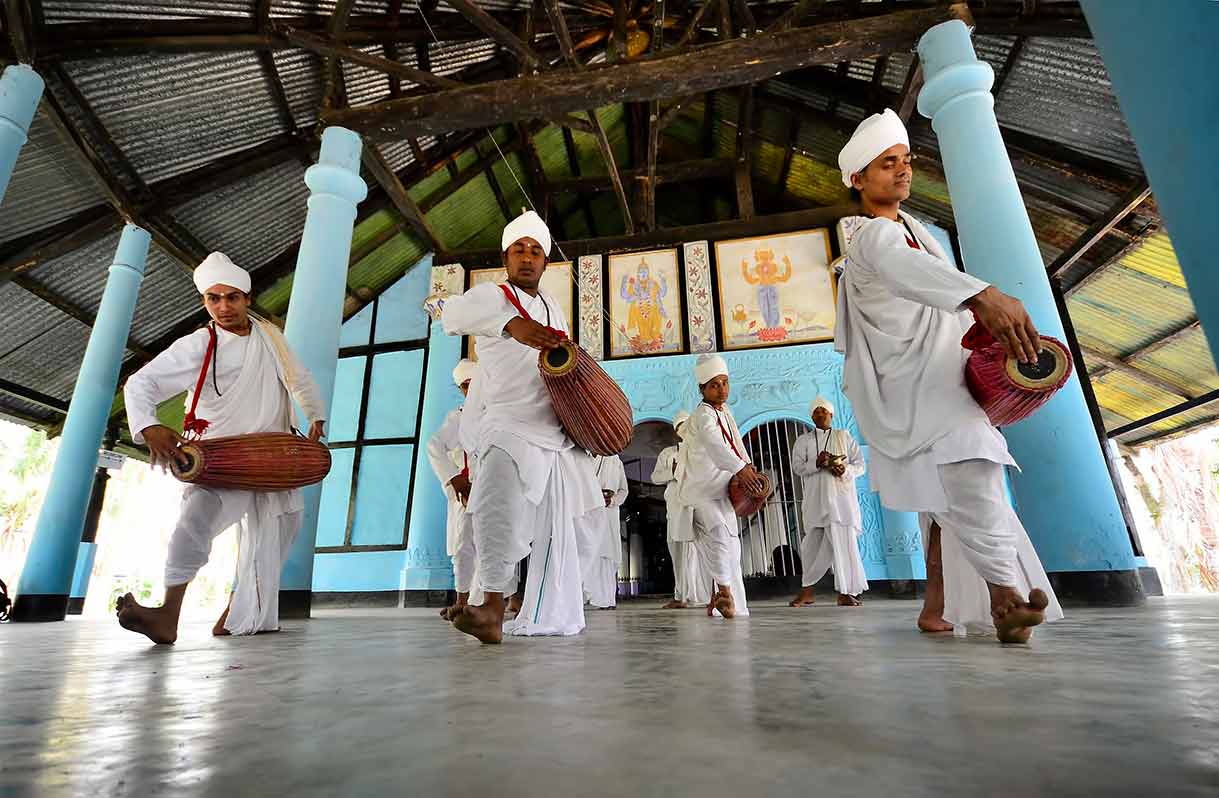
This form of spirituality is strictly monotheistic, the only religion prescribed is to pronounce the name of God ‘Sravana-Kirttana’, who is venerated in the form of Krishna. The cult rejects the Vedic rites, the caste system and sacrifices of animals common in the Tantric cults of Hinduism. Noticed for its egalitarianism, the Assamese vishnuism has converted into it people of all castes, ethnicities and religions (including Islam).
Out of the 65 original satras, 31 are still active in Majuli. Each satra has its artistic particularity regarding music, literature, dance, theater and crafts.
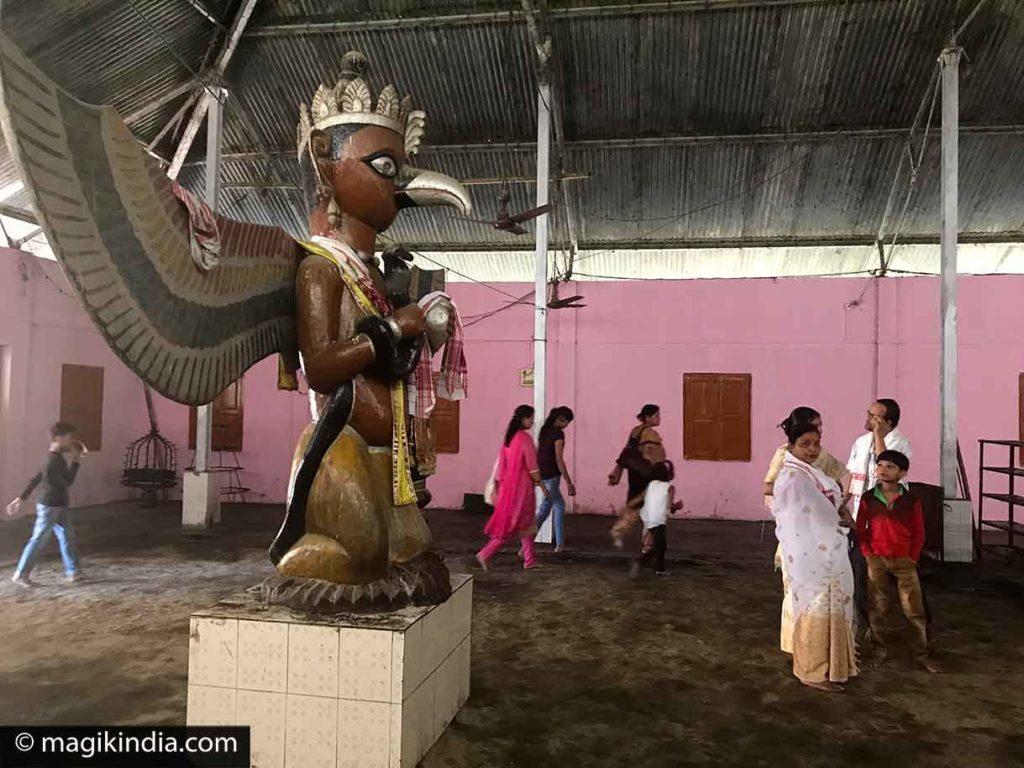
The spiritual life of the satras is centered around the ‘Namghar’, a large hall where monks congregate and which is not accessible to the public. Prayers are accompanied by kirtans (devotional singing) and percussions such as Khol (drum) and Kartal (big cymbals). At festivals, or on request, the monks give dance recitals.
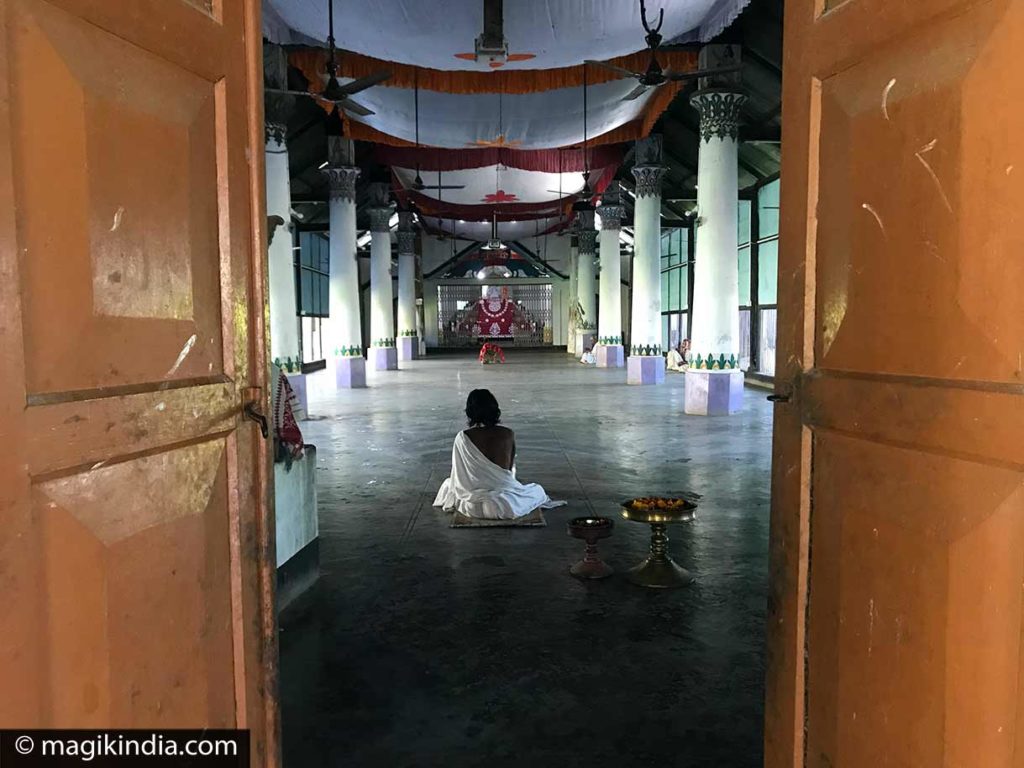

When visiting the different monasteries, you can’t miss the Chamaguri satra where are made the masks used for the performances of ‘Bhaona’, a form of popular theater. These masks are another unique art form that the scholar Sankardeva introduced in Assam. The Bhaona is based on the six plays ‘Ankiya Nat’ he wrote, inspired mainly by the story of Lord Krishna.
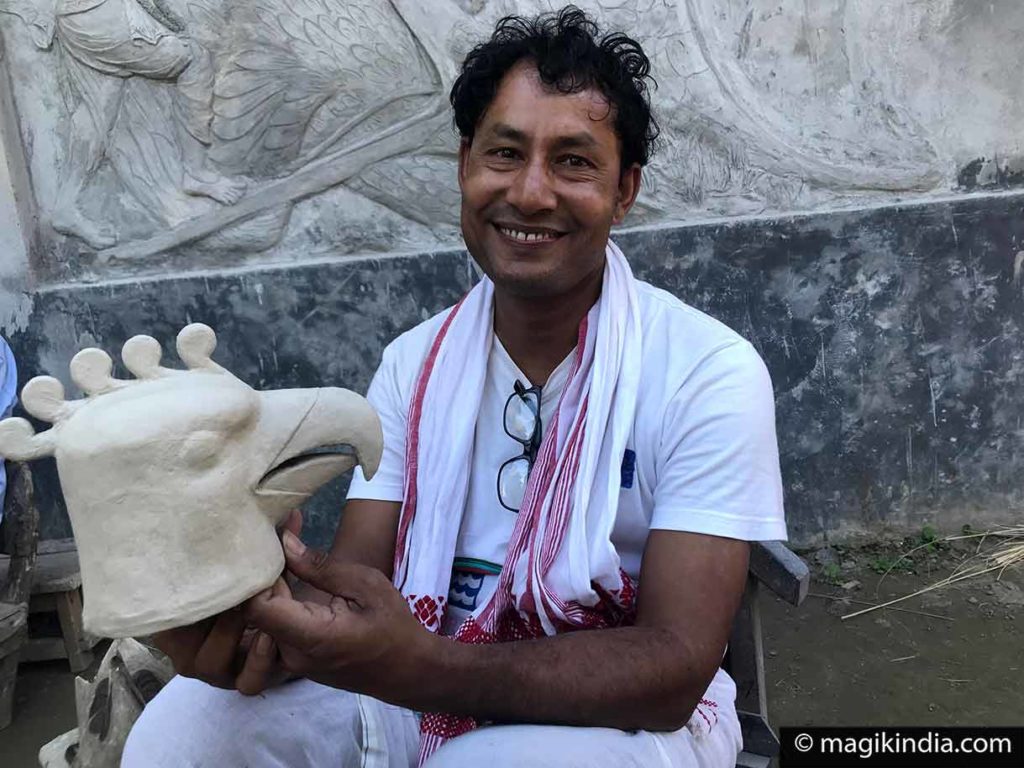
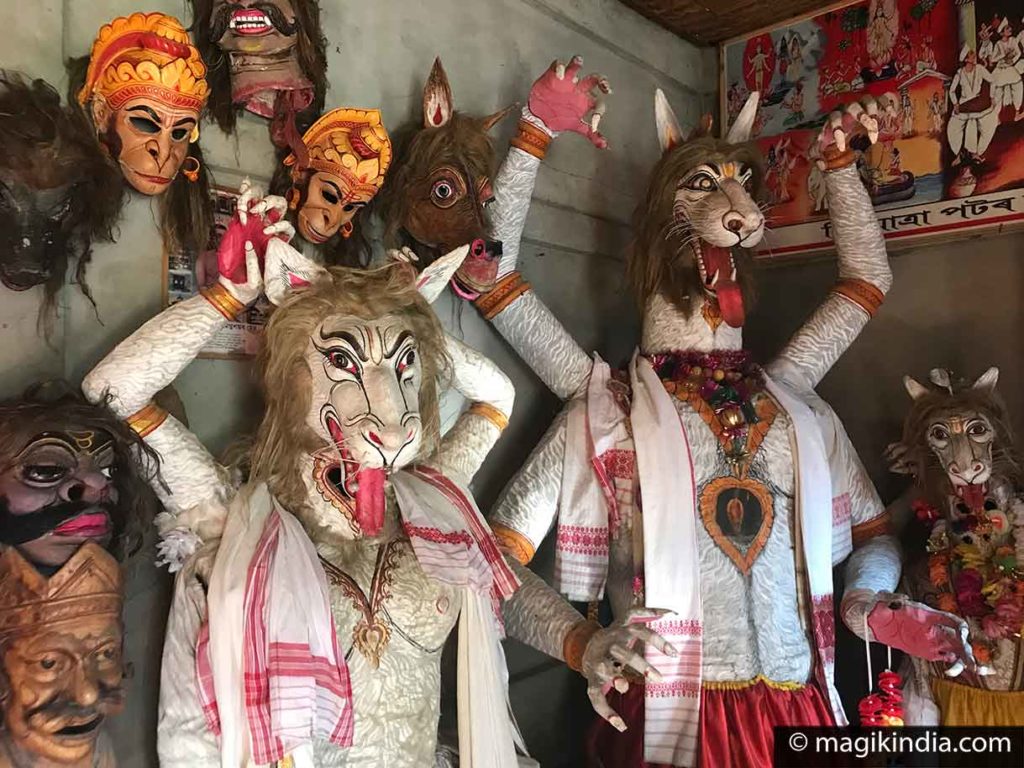
Besides visiting the satras, the island has several fascinating tribal villages (mising in majority). Weaving is one of the major occupations of villagers. It requires the use of a wide variety of colors and the combination of cotton and silk, especially Muga silk (see above). Basketry and pottery are two other popular crafts in these tribal villages.
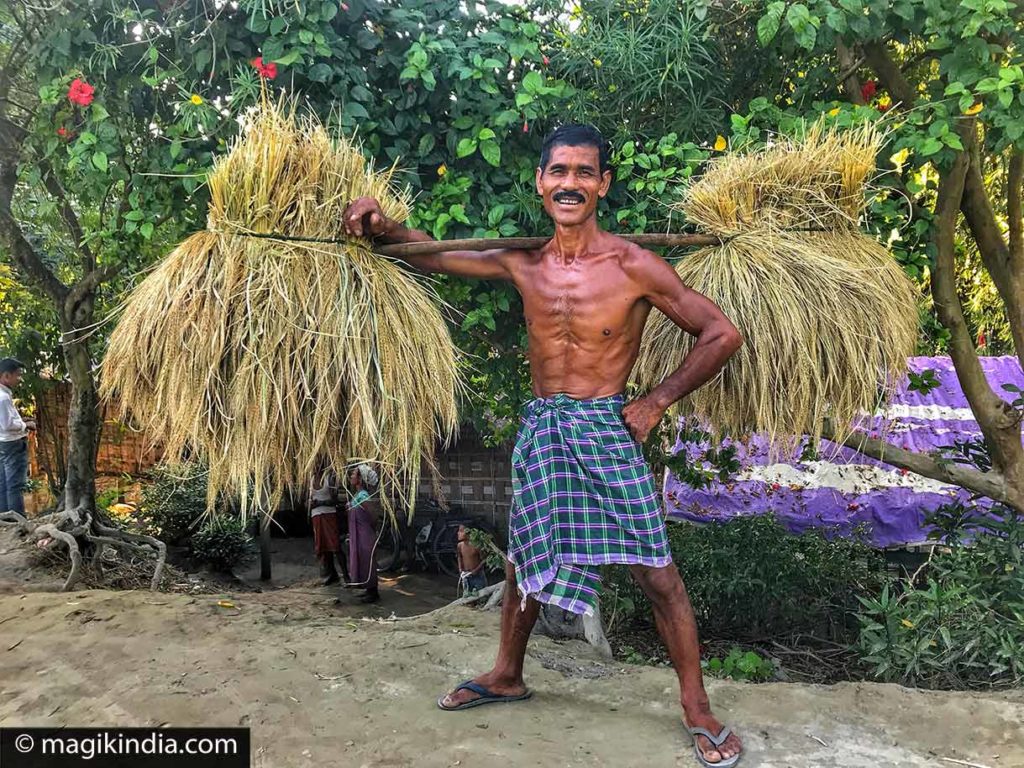
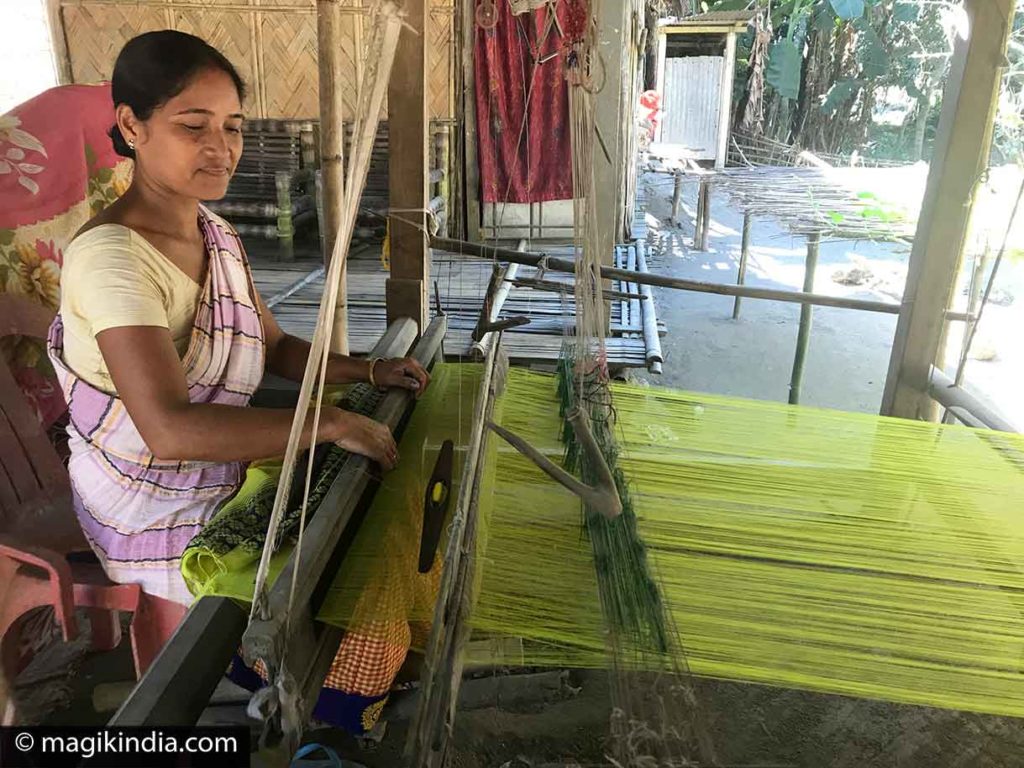
The trip to Assam ends now … Follow me in the neighboring state: Meghalaya!

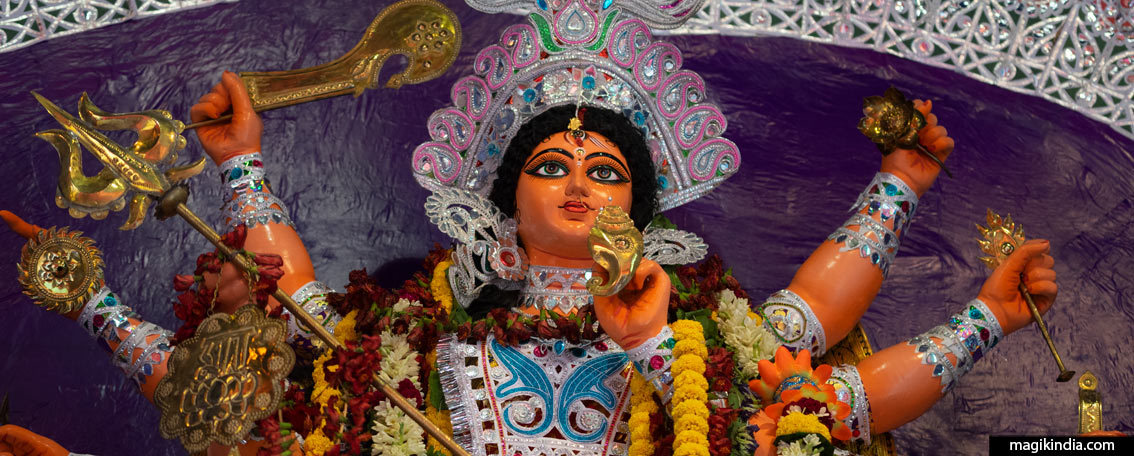
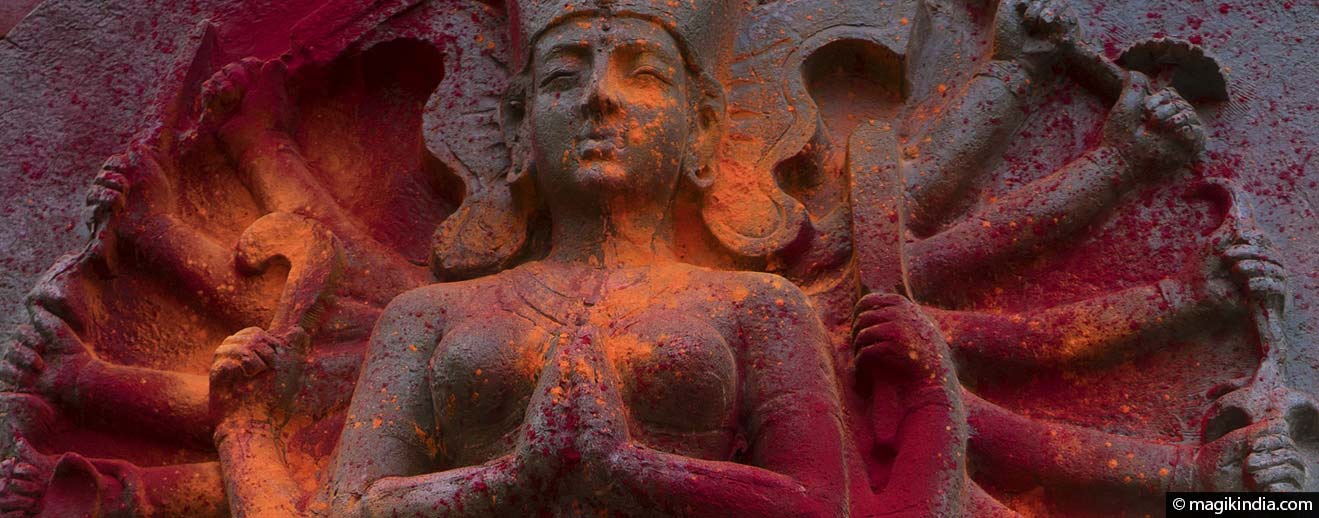
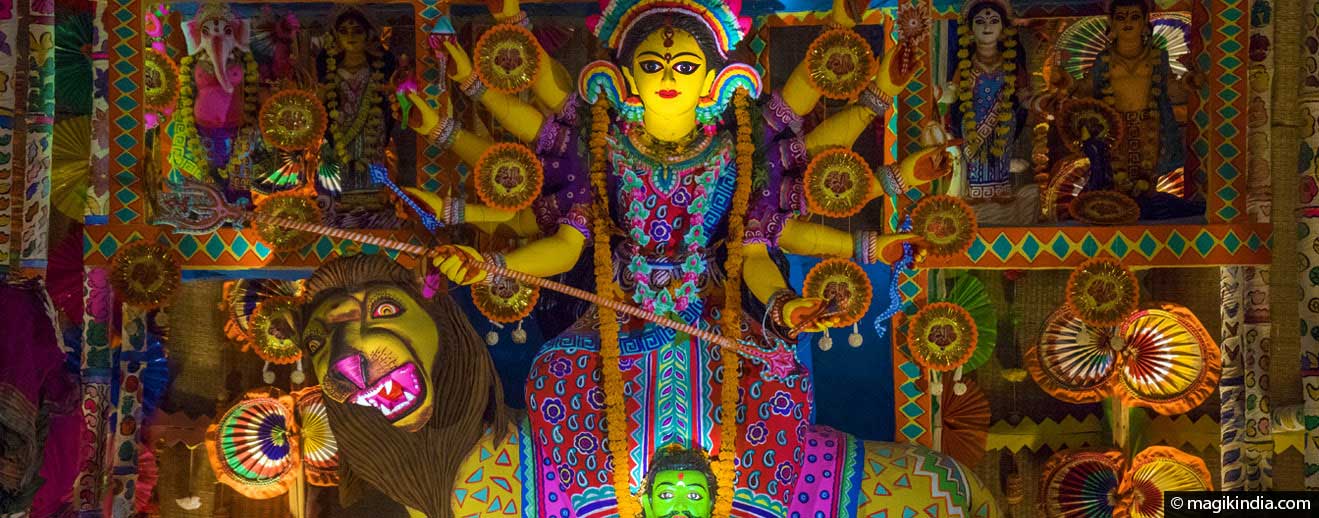

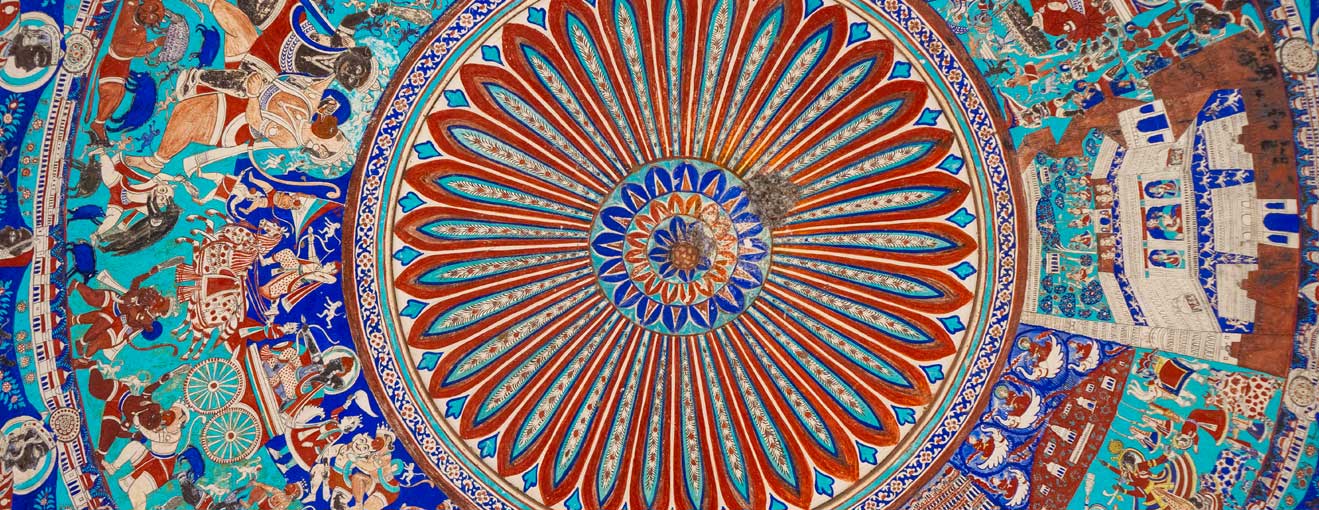

Very impressive..Mysterious goddess.I like this place and the temple.
Thanks.
S.K.
Thanks a lot S.K. my best regards. Mathini